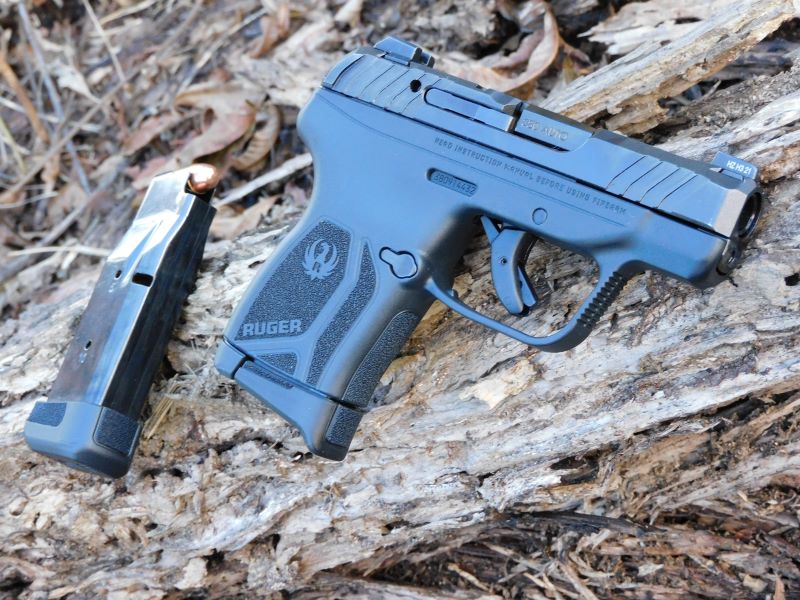When John Moses Browning died at his workbench in 1926, he left a lasting legacy. For better or worse, most firearms, new and old, are Browning designs or refinements of those designs. As much as we like to think there is something new under the sun, there really is not. But if there is one person who has changed the world of firearms since Browning, it would have to be Bill Ruger. Although Ruger has since passed on as well, the company he founded all the way back in 1949 continues their namesake’s knack for innovation and marketing in a rapidly crowding firearms industry that caters to more Americans now than ever. This is the story of Ruger, from past to present, with all its ups and downs.

The Man, the Legend, Bill Ruger
The story of Ruger the company begins with Ruger, the man. Bill Ruger was a natural tinkerer with no professional training as a gunsmith or engineer, but his love of firearms led him down that path. He was not the first great firearms designer, nor the first to use cast parts, or invent the transfer bar safety. But he had a knack for sensing the room for what the public wanted and found as simple a path as possible to give it to them.
As an undergraduate at UNC Chapel Hill during the 1930s, he converted a room into a machine shop where he developed new gun designs for the US Army. Although, these designs never went beyond the trial phase, the US Army hired Ruger as a designer at Springfield Armory.
World War II created new trends and left new voids in the gun industry after the war was finished. Returning GIs came back with boatloads of automatic pistols as war trophies and an appreciation for their autoloading M1 Garand rifles and M1 Carbines. Ruger received a pair of Japanese Type 14 Nambu pistols from a returning GI and he quickly set about perfecting a .22 caliber auto pistol for that design. The .22 LR was, and still is a popular sporting cartridge that was not normally encountered in an auto pistol of the day.

Enter Alexander Sturm
But few investors at the time thought such a pistol would work in this new market. Alexander McCormick Sturm, heir to the McCormick empire, thought otherwise and financed Ruger’s tooling costs. To save cash where he could, Ruger used investment casting technology wherever possible, instead of forging and machining steel from billets into shape. Casting had been used in firearms for centuries but it was done sparingly due to the potential of air bubbles creating invisible faults in the steel. But Ruger found a workaround to eliminate air voids. The new Ruger Standard was inexpensive to produce, yet it retained a familiar Luger-like style and paired it with the ubiquitous .22 LR cartridge. The pistol was a success and it cemented Sturm, Ruger & Co. as a going concern. Alexander Sturm would die unexpectedly in 1951, but his name and the Germanic eagle in Ruger’s logo would be a lasting tribute to him as Ruger went on to a firearms-designing crusade that would last another half-century.
Design after Design
Bill Ruger’s knack for reading the room would go on to grow the company from an upstart firm to one of the largest firearm manufacturing firms in the world. With the rise of the TV Western in the 1950s, Ruger capitalized on the demand for new single-action revolvers with their Single Six and Bearcat revolvers. In 1960, Marlin launched their famous Model 60 .22 caliber semi-automatic rifle. In 1964, Ruger debuted their 10/22. That .22 rifle uses detachable rotary magazines instead of a tubular magazine, like the Model 60 and many of the previous generation of .22 rifles.

Capitalizing on the popularity of the M14 and, shortly after Springfield Armory emerged to manufacture the semi-automatic M1A in 1974, Ruger introduced a smaller, lighter version–the Mini 14 in .223 Remington. In that decade, Ruger also entered the police revolver market with the Security Six .357 Magnum. Although the transfer bar safety had been used on revolvers like the Iver Johnson Safety Automatic and the Russian M1895 Nagant, the Security Six was the first modern revolver to feature it.

In the 1980s, Ruger simplified their Security Six, which became the GP100. Ruger also produced a smaller version intended for the backup role, the SP101. The company also jumped into the duty-sized auto pistol market at a time when police departments were starting to transition from revolvers. The Ruger P89 and P95 double-action pistols were bullet-proof designs, but would never prove to be as popular as their revolvers. But toward the end of the decade, Ruger and other American firearm manufacturers came under threat.

Controversy
Bill Ruger was at the helm of the Sturm Ruger until ill health forced his retirement in 2000. While Ruger’s career was just as illustrious as that of Colt and Browning, he does not enjoy the good will of some gun owners and Second Amendment activists.
Through the crime wave of the 1980s, Congress began to craft an outright ban on certain types of firearms, including so-called assault weapons. Bill Ruger sent an open letter to Congress in March 1989 that suggested a ban of magazines over 15 rounds, instead of an outright ban on the firearms themselves. He stated that:
“The best way to address the firepower concern is therefore not to try to outlaw or license many millions of older and perfectly legitimate firearms (which would be a licensing effort of staggering proportions) but to prohibit the possession of high-capacity magazines. By a simple, complete, and unequivocal ban on large-capacity magazines, all the difficulty of defining ‘assault rifle’ and ‘semi-automatic rifles’ is eliminated. The large capacity magazine itself, separate or attached to the firearm, becomes the prohibited item. A single amendment to Federal firearms laws could effectively implement these objectives.”
In essence, Bill Ruger proposed gun control to save gun rights. Banning the sale and possession of firearms would essentially end their production run, while a ban on magazine capacity did not require modifying a firearm. Such a ban could later be overcome in the future, whereas a total gun ban would be more permanent.
Ruger’s proposal was unforgivable to some consumers, especially after the ultimate gun control effort, the 1994 Assault Weapons Ban came to pass and higher capacity magazines were banned for private use. Sturm Ruger continued to offer higher capacity magazines for their pistols and Mini-14 rifles for military and law enforcement use only. Only after the end of the Ruger family’s involvement in the company following Bill Ruger Jr.’s retirement in 2006 did the company resume higher capacity magazine sales to the private market.
Renaissance
For several years following the loss of Bill Ruger Sr., Sturm, Ruger & Co. was characterized by stagnation. The company continued to subsist on legacy designs, while the competition made serious inroads. But the company would find itself once again by adopting the same principle of its founder: read the room.
Shall-issue concealed carry permitting schemes gained acceptance throughout the United States through the 1990s and early 2000s. This led to the creation of the first modern .380 pocket pistol, the Keltec P3AT. It was lighter and more powerful than the generation of .22 and .25 caliber pistols that preceded it. It was ideal for concealed-carry, but it was not made in large enough numbers to be more than a proof of concept. Ruger announced their LCP, or Lightweight Compact Pistol, in 2008. It was an improved P3AT that had all the production capacity that Ruger could throw at it. Since then, that pistol and its many variants have been produced in the millions and owns the lion’s share of the .380 market today.

Simultaneously, Ruger debuted the LCR, their Lightweight Compact revolver. After years of losing market share in the small revolver market, Ruger was back in force with a five-shooter that had a polymer grip frame and fire control housing–the first of its kind.
The Clinton Assault Weapons Ban expired in 2004. It led to a renaissance of arms manufacture and an end to nationwide magazine capacity limits. In that time since, Ruger has developed modern polymer-framed pistols to replace their aging P-series guns. Pistols like the American, the Security-9, and the Five-Seven are nearly as common as their smaller LCP and LCR handguns.


